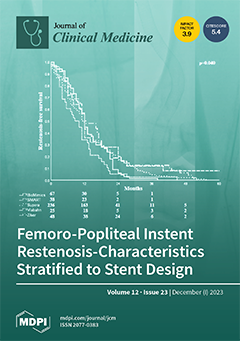Background: Patients with infectious complications related to the presence of cardiac implantable electronic devices (CIED) constitute a heterogeneous group, ranging from local pocket infection (PI) to lead-related infectious endocarditis (LRIE) infection spreading along the leads to the endocardium. The detection of isolated LRIE and the assessment of the spread of infection in a patient with PI is often difficult and requires complex imaging and microbiological tests. The aim of the current study is to evaluate the usefulness of new simple hematological parameters in detecting infectious complications in patients with CIED, differentiating vegetation and vegetation-like masses, and assessing the extent of infections in patients with PI. Methods: A retrospective analysis of clinical data of 2909 patients (36.37% with CIED-related infections), undergoing transvenous lead extraction (TLE) procedures in three high-volume centres in the years 2006–2020, was conducted. Receiver operating characteristic (ROC) curve analysis was used to assess the sensitivity and specificity of neutrophil-to-lymphocyte ratio (NLR), neutrophil-to-platelet ratio (NPR), and lymphocyte-to-platelet ratio (LPR) in the diagnosis of CIED infections, evaluate the spread of the infectious process in patients with PI and differentiate additional structures related to the presence of lead. Results: The values of NLR and NPR were significantly higher in infectious patients than non-infectious controls (3.07 vs. 2.59;
p < 0.001, and 0.02 vs. 0.01;
p = 0.008) and the area under the ROC curve (AUC) was 0.59;
p < 0.001 and 0.56;
p < 0.001, respectively. The high specificity of the new markers in detecting the infectious process was demonstrated: 72.82% for NLR (optimal cut-off value: 3.06) and 79.47% for NPR (optimal cut off value: 0.02). The values of NLR and NPR were significantly higher in patients with vegetations than in non-infectious patients with the presence of additional lead-related masses (3.37 vs. 2.61;
p < 0.001 and 0.03 vs. 0.02;
p = 0.008). The AUC of NLR and NPR for the prediction of vegetations was 0.65;
p < 0.001 and 0.60;
p < 0.001 with the highest specificity of NPR (82.78%) and an optimal cut-off value of 0.03. NLR and NPR were higher in patients with LRIE compared to isolated PI (4.11 vs. 2.56;
p < 0.001 and 0.03 vs. 0.02;
p < 0.001) and the ROC curve analysis for coexistence LRIE with PI showed the AUC for NLR: 0.57;
p < 0.001 and AUC for NPR: 0.55;
p = 0.001. High specificity in the detection of coexistence between PI and LRIE was demonstrated for NLR (87.33%), with an optimal cut-off value of 3.13. Conclusions: Novel hematological markers (NLR and NPR) are characterized by high specificity in the initial diagnosis of CIED infections, with optimal cut-off values of 3.06 and 0.02. NLR is also useful in the assessment of the spread of infection in patients with PI, with a calculated optimal cut-off value of 3.13. NPR may be helpful in the differentiation of vegetation and vegetation-like masses with an optimal cut-off value of 0.03.
Full article






